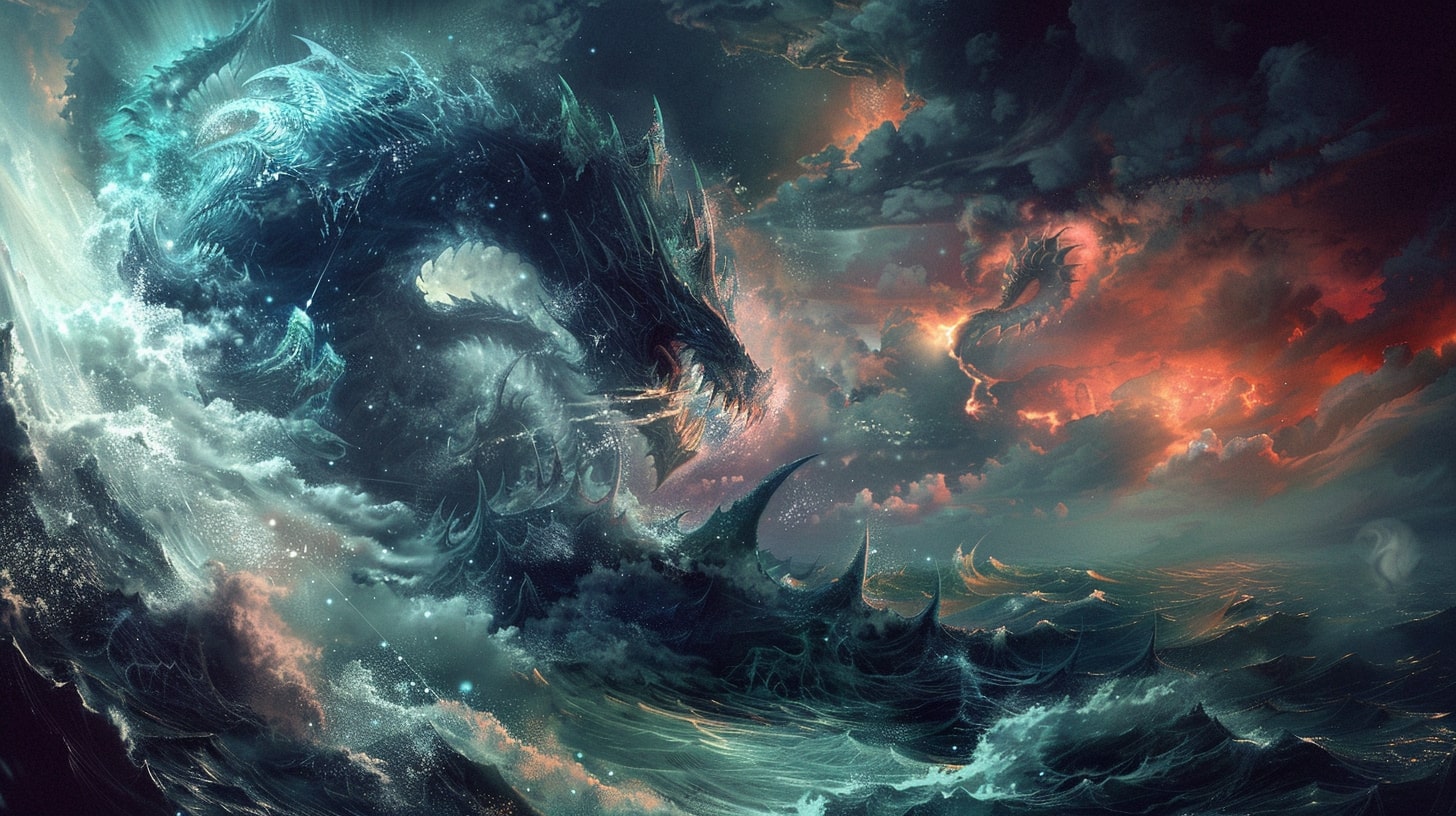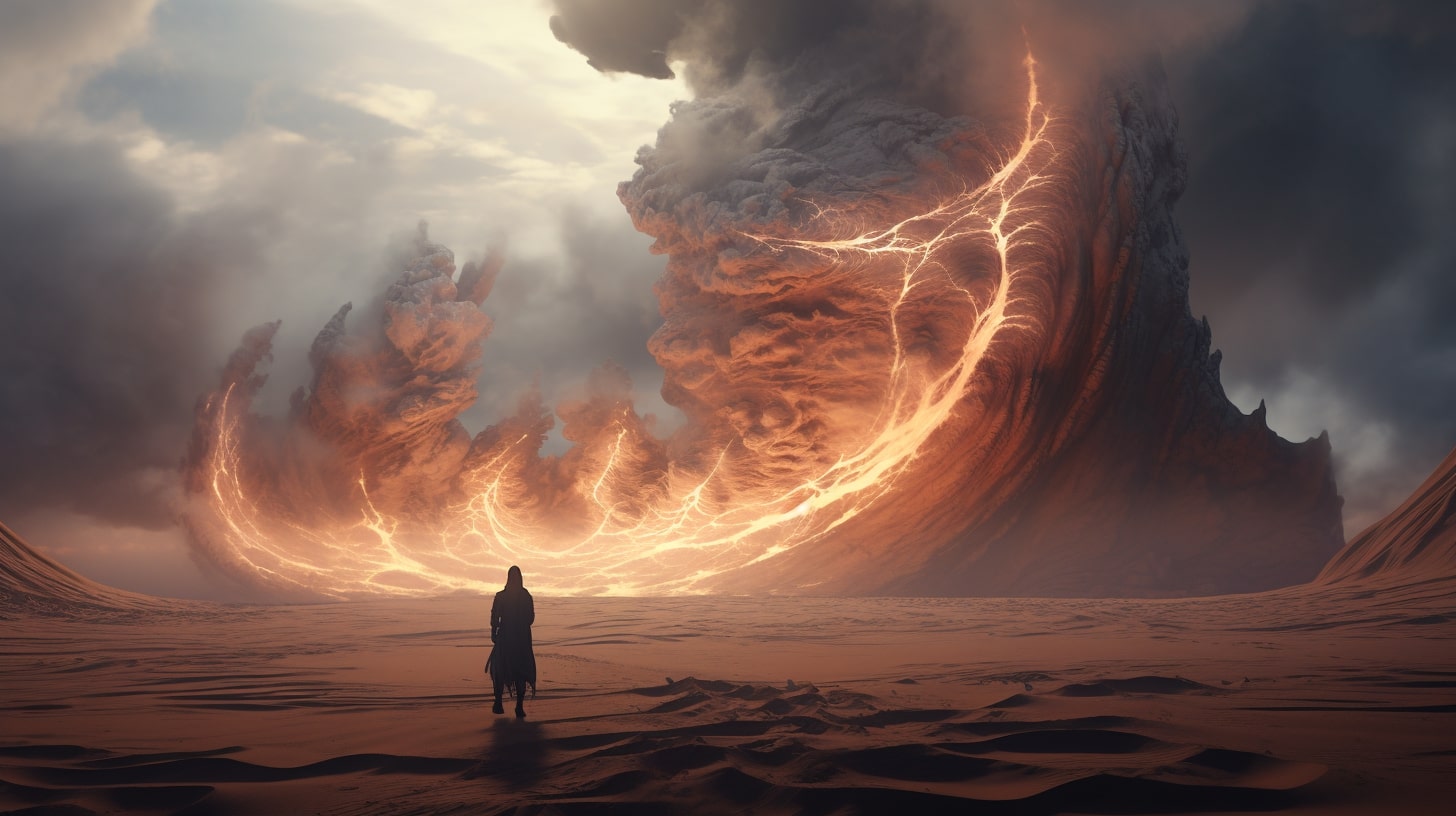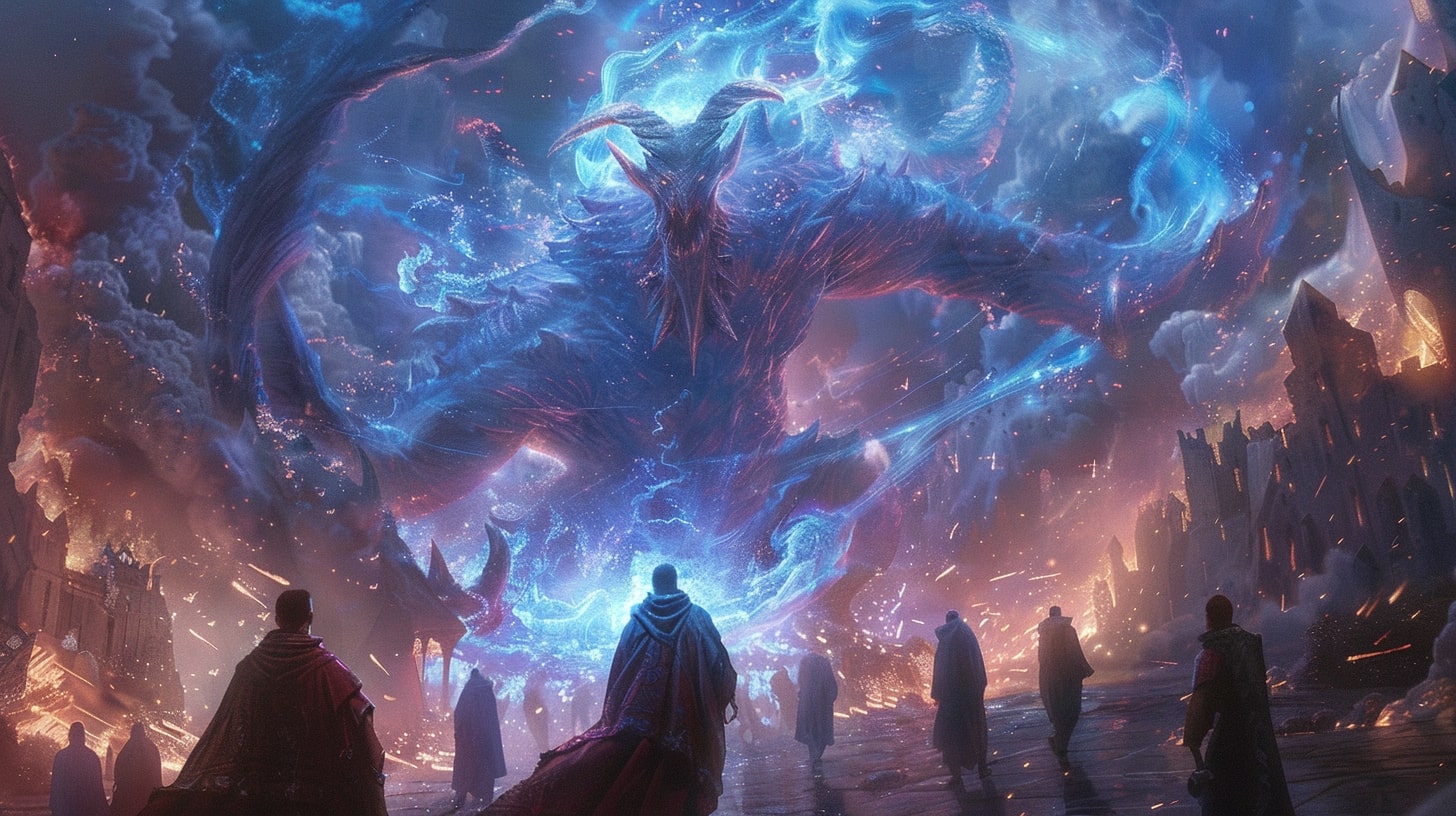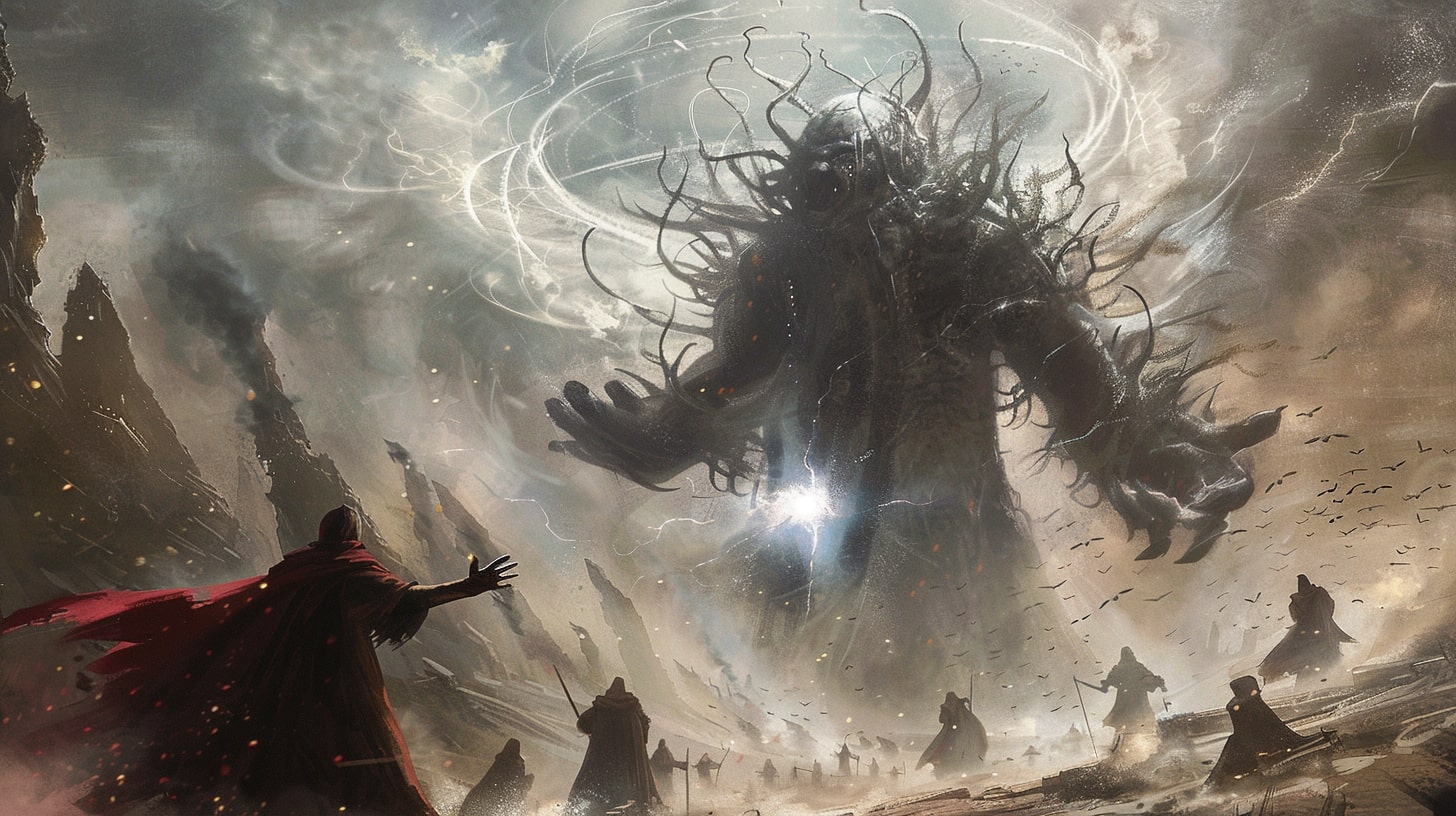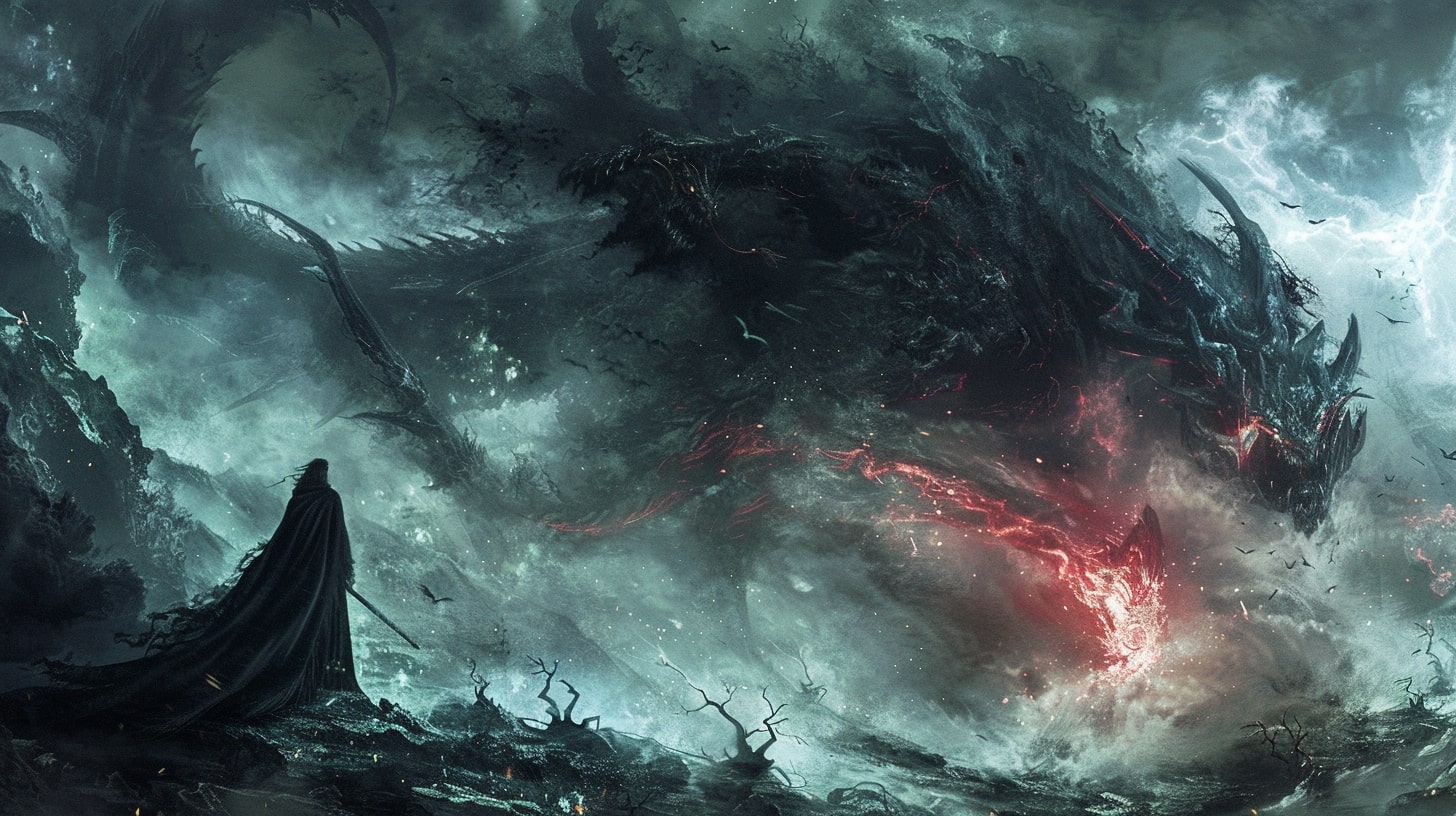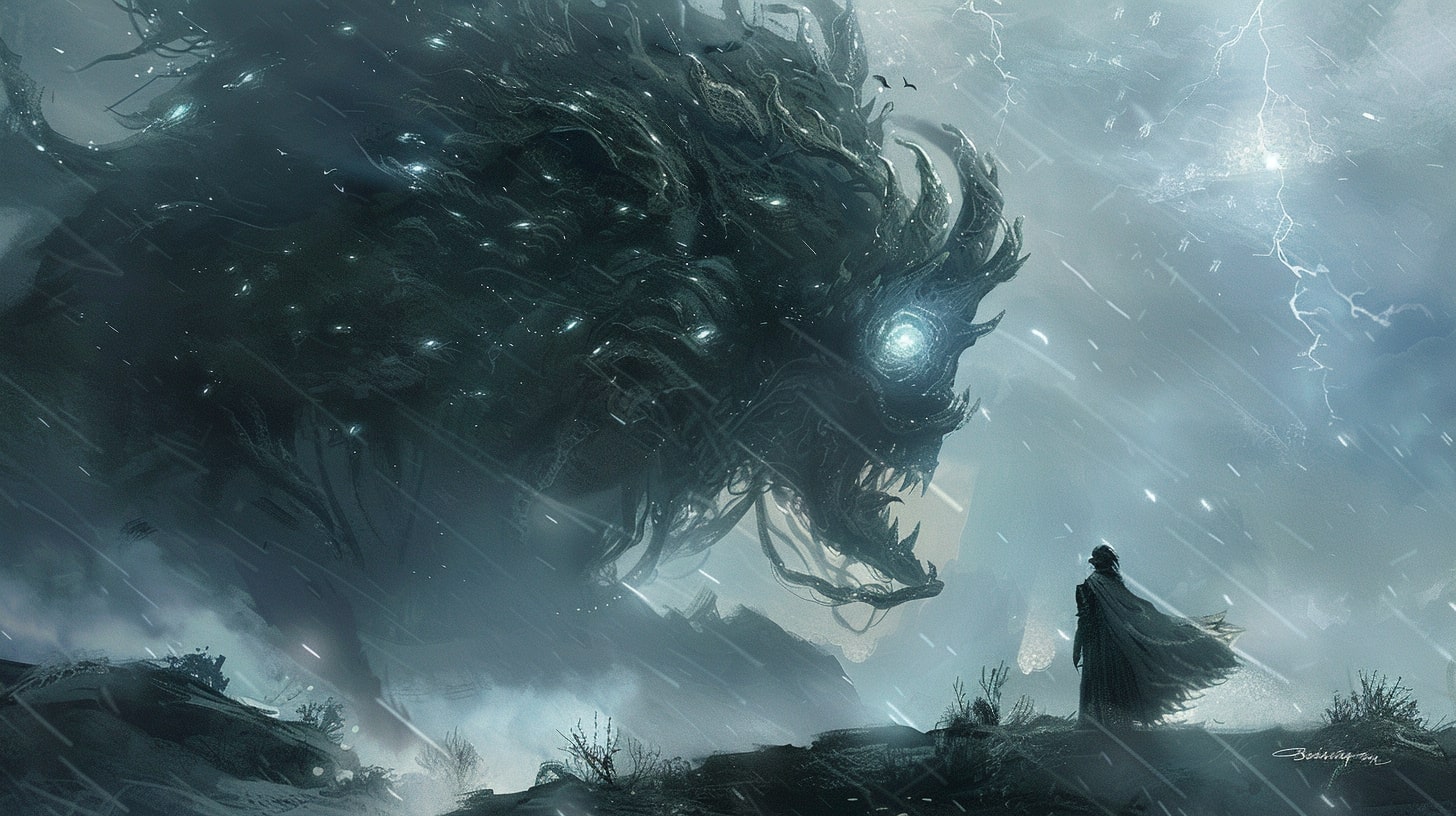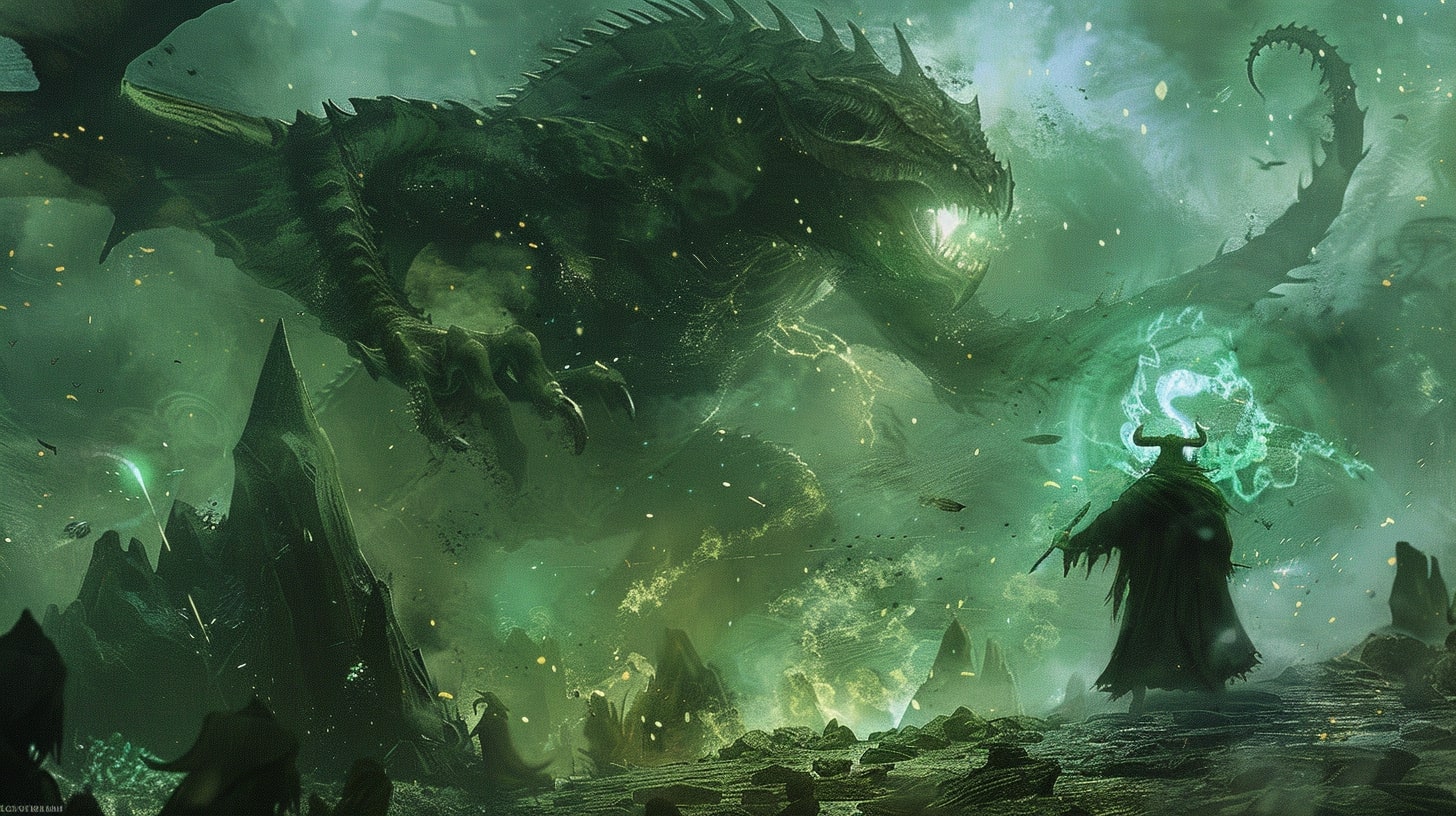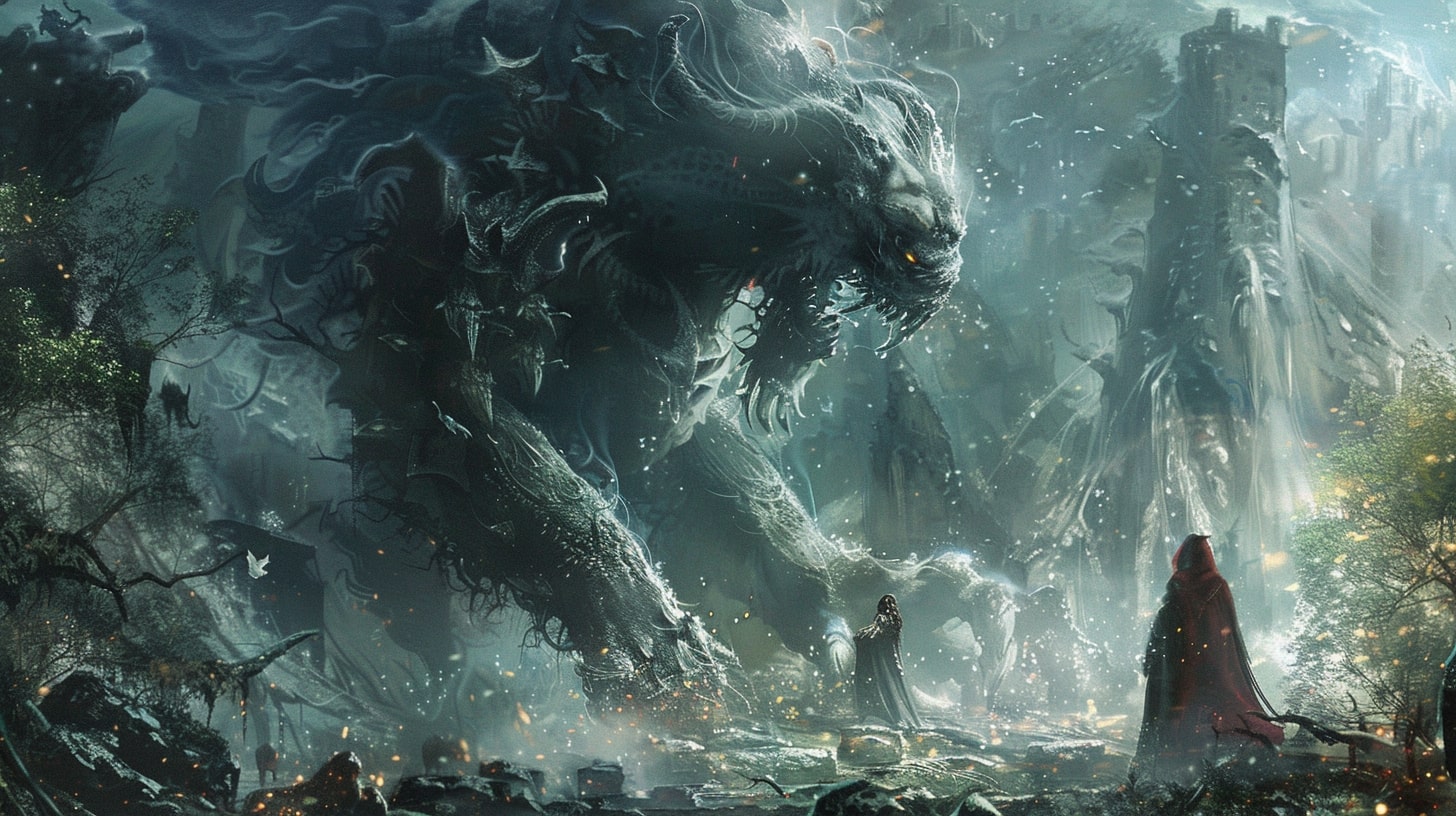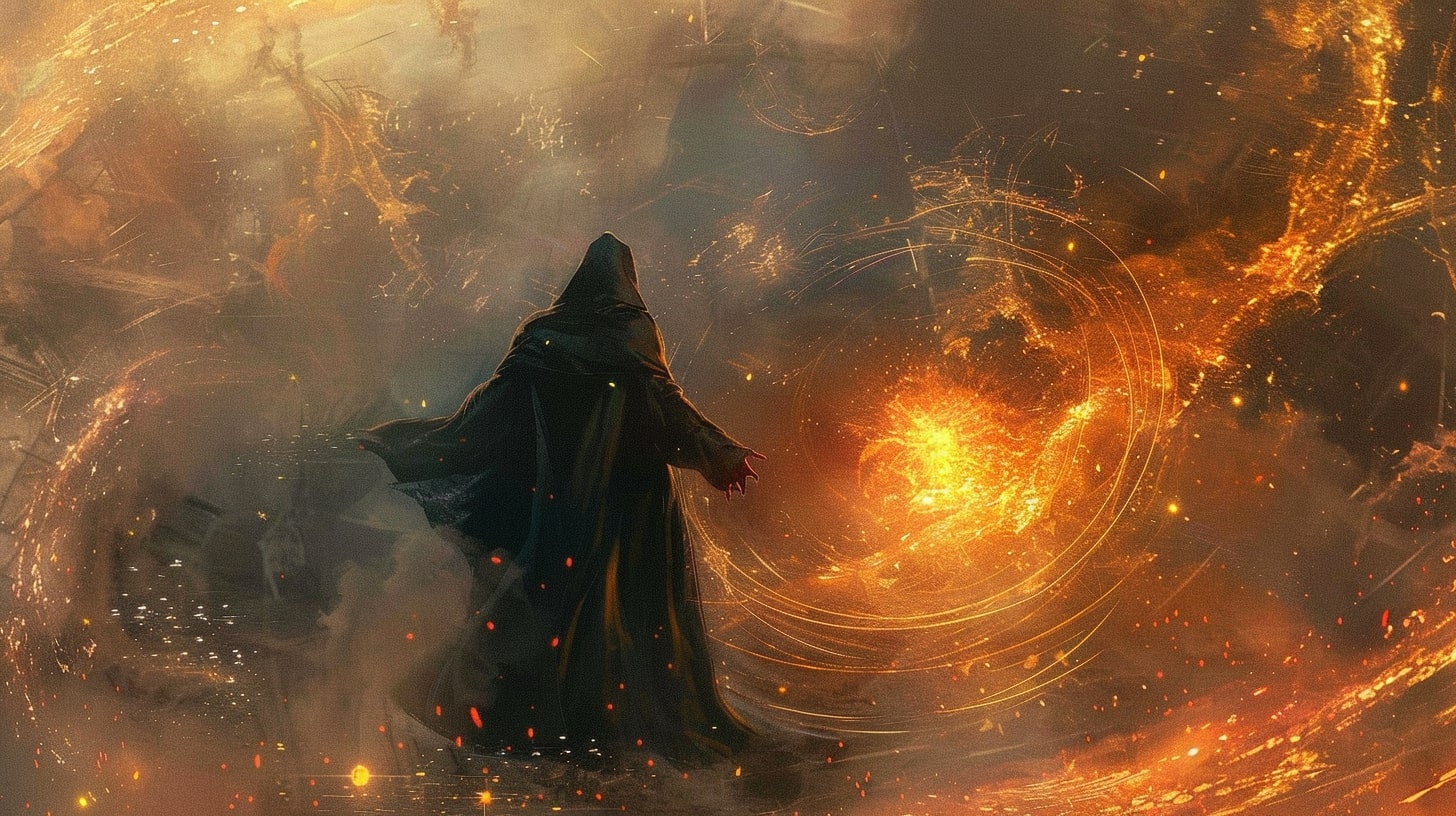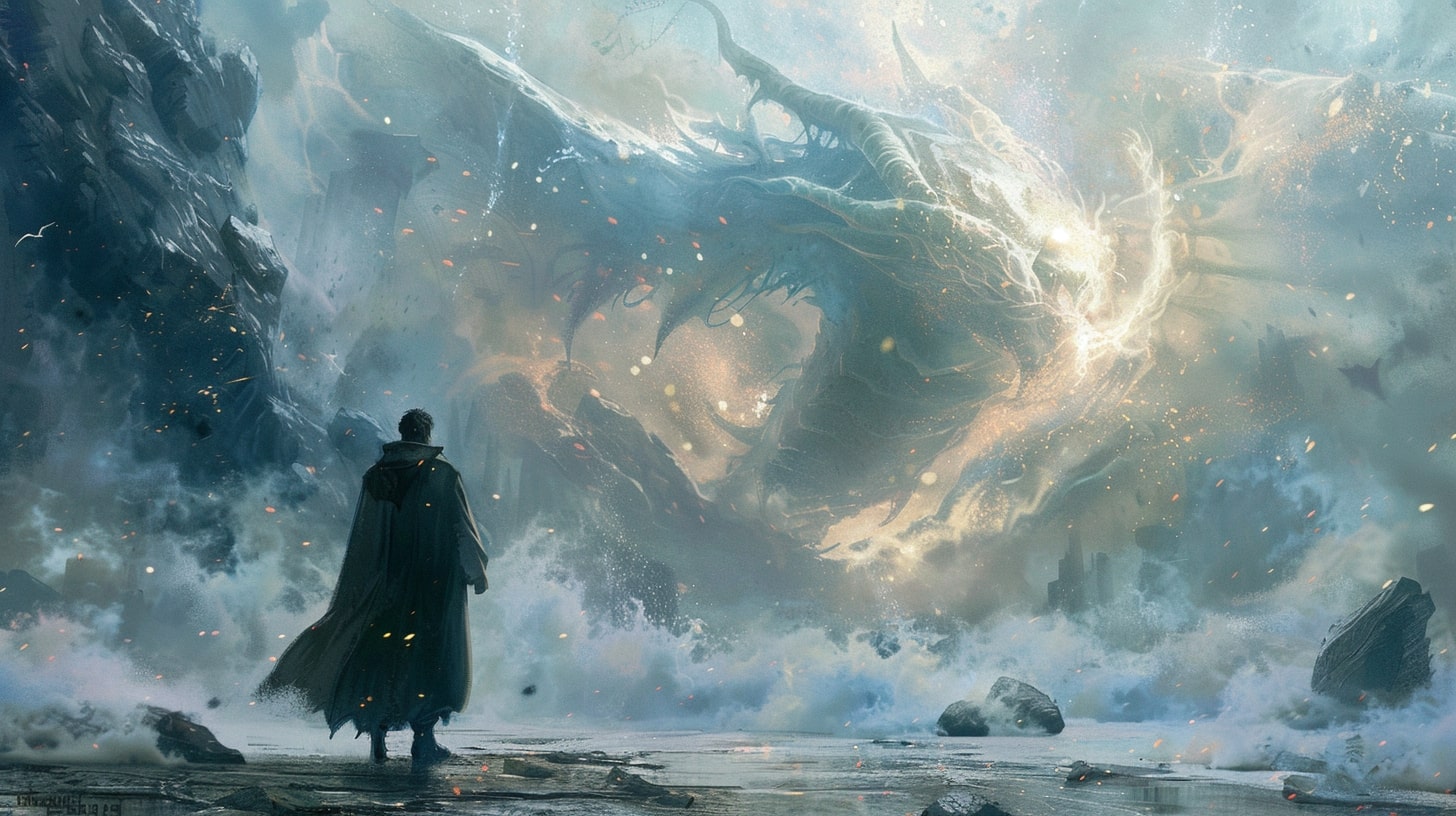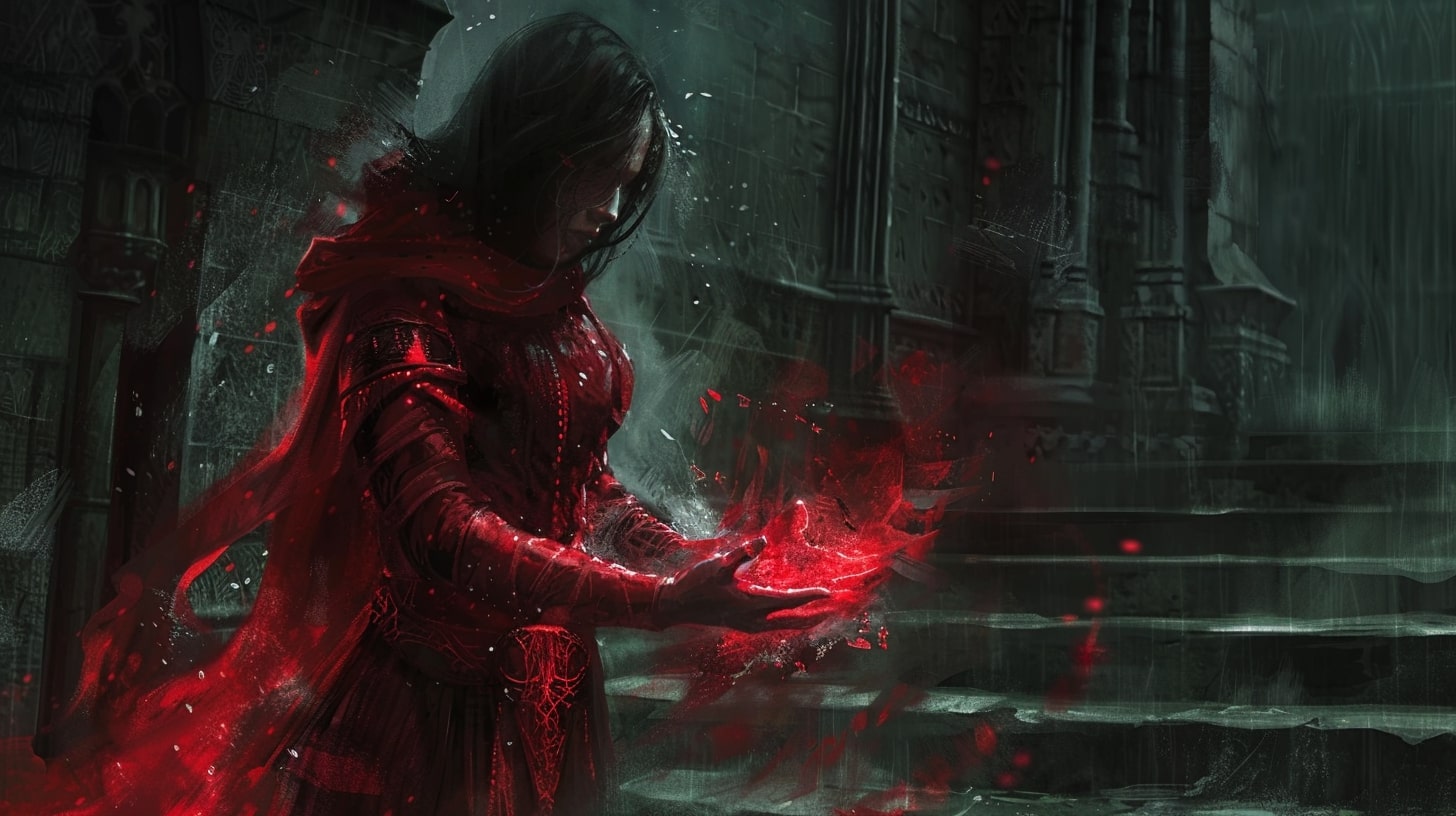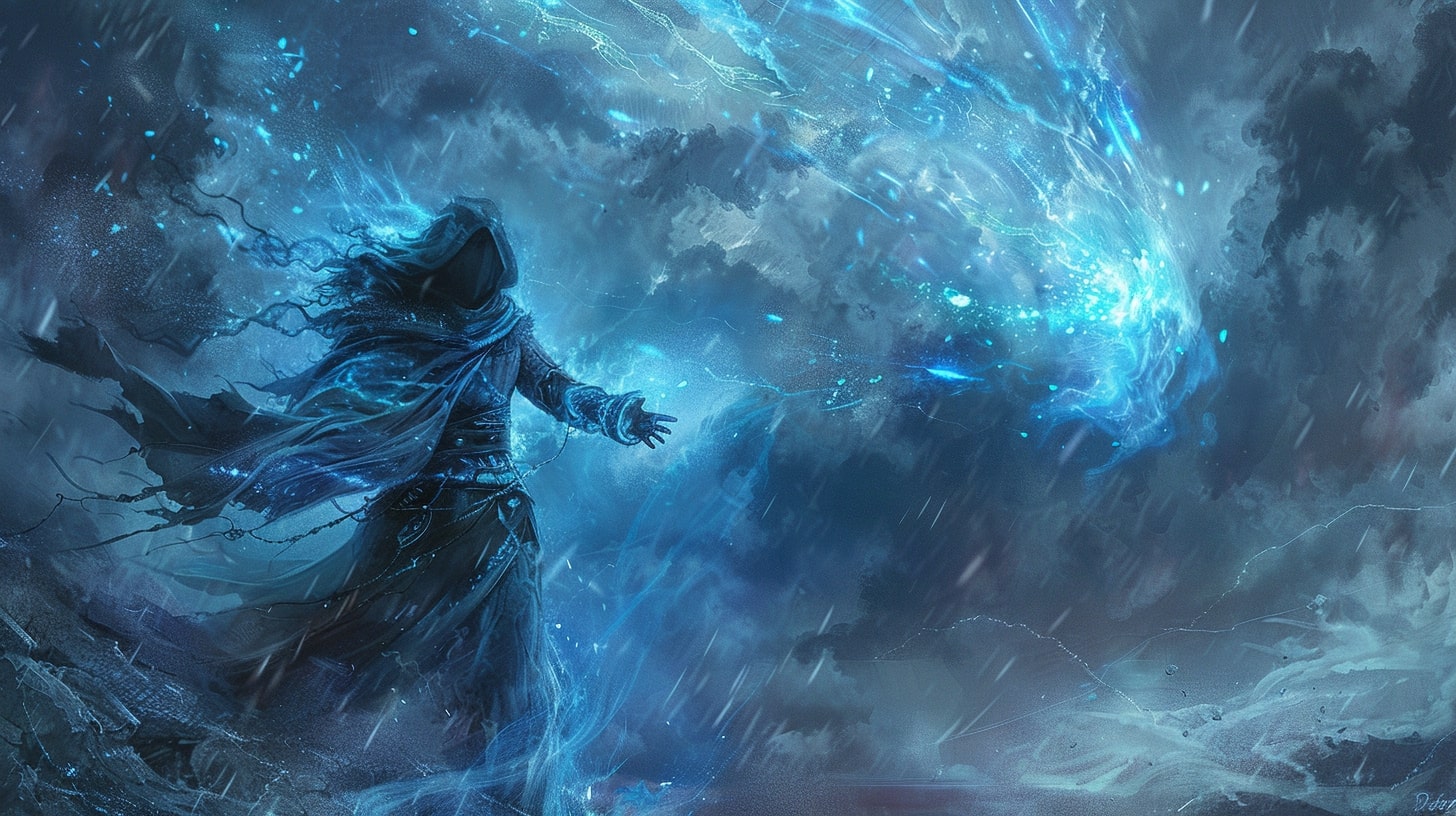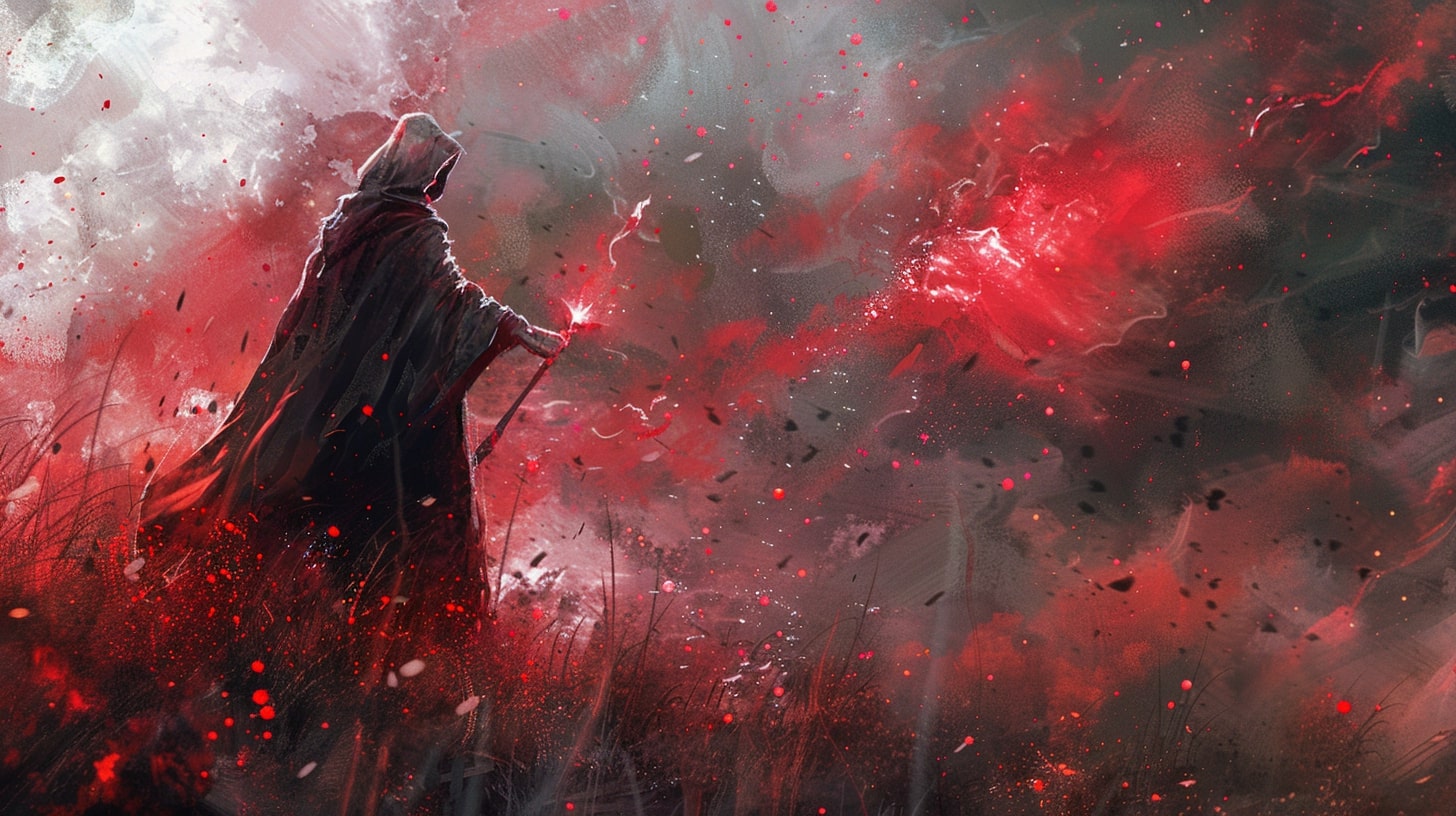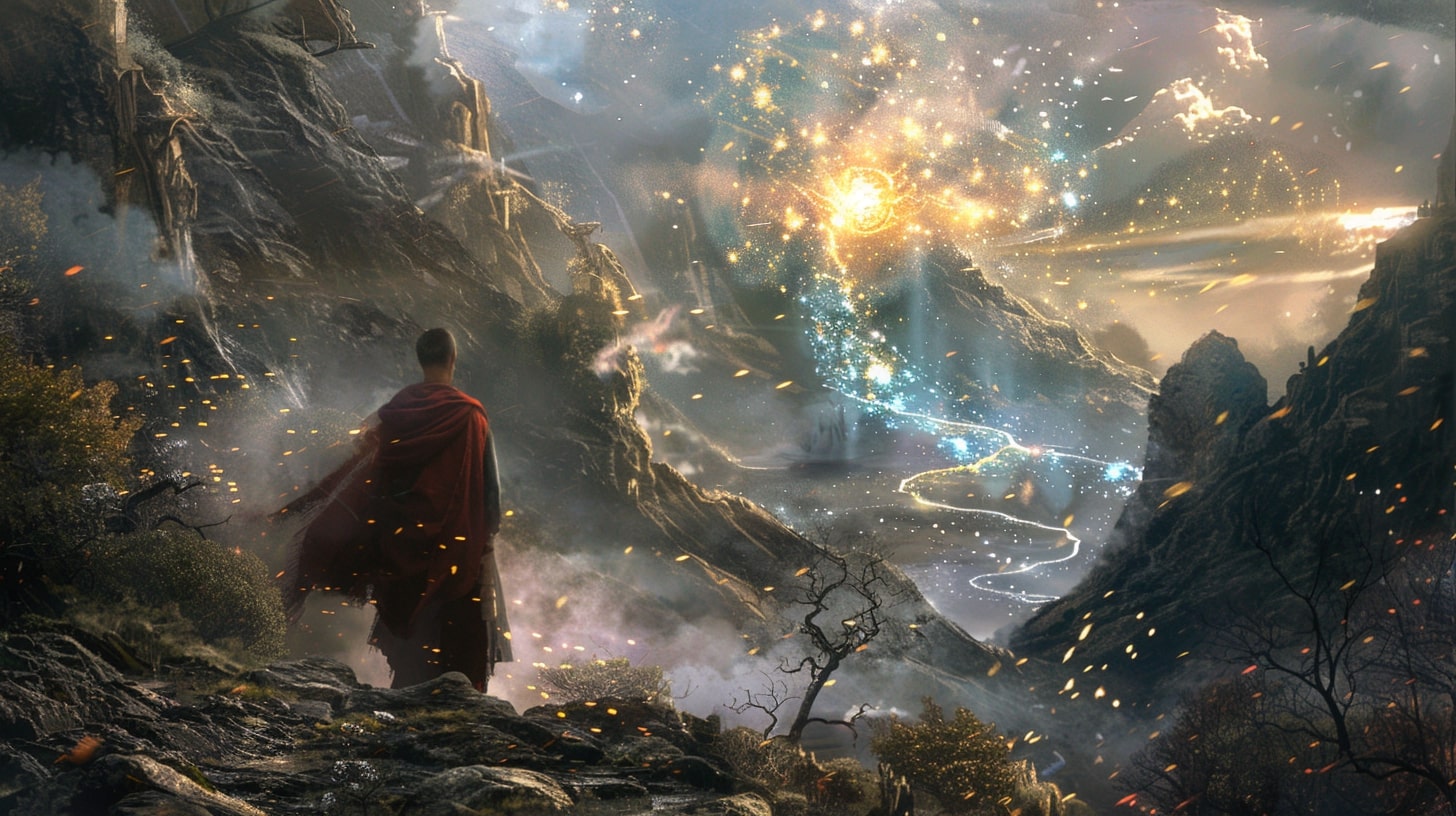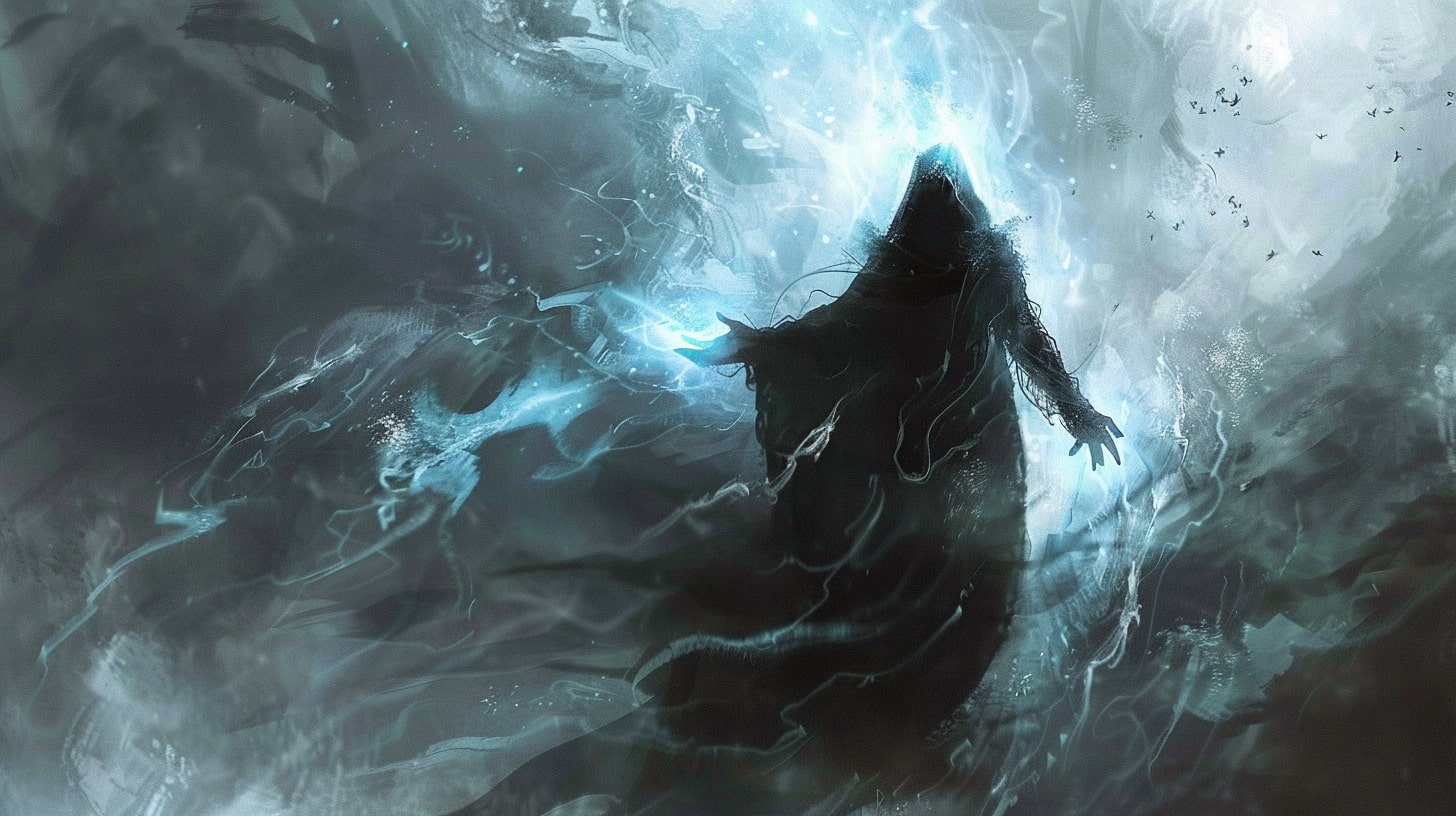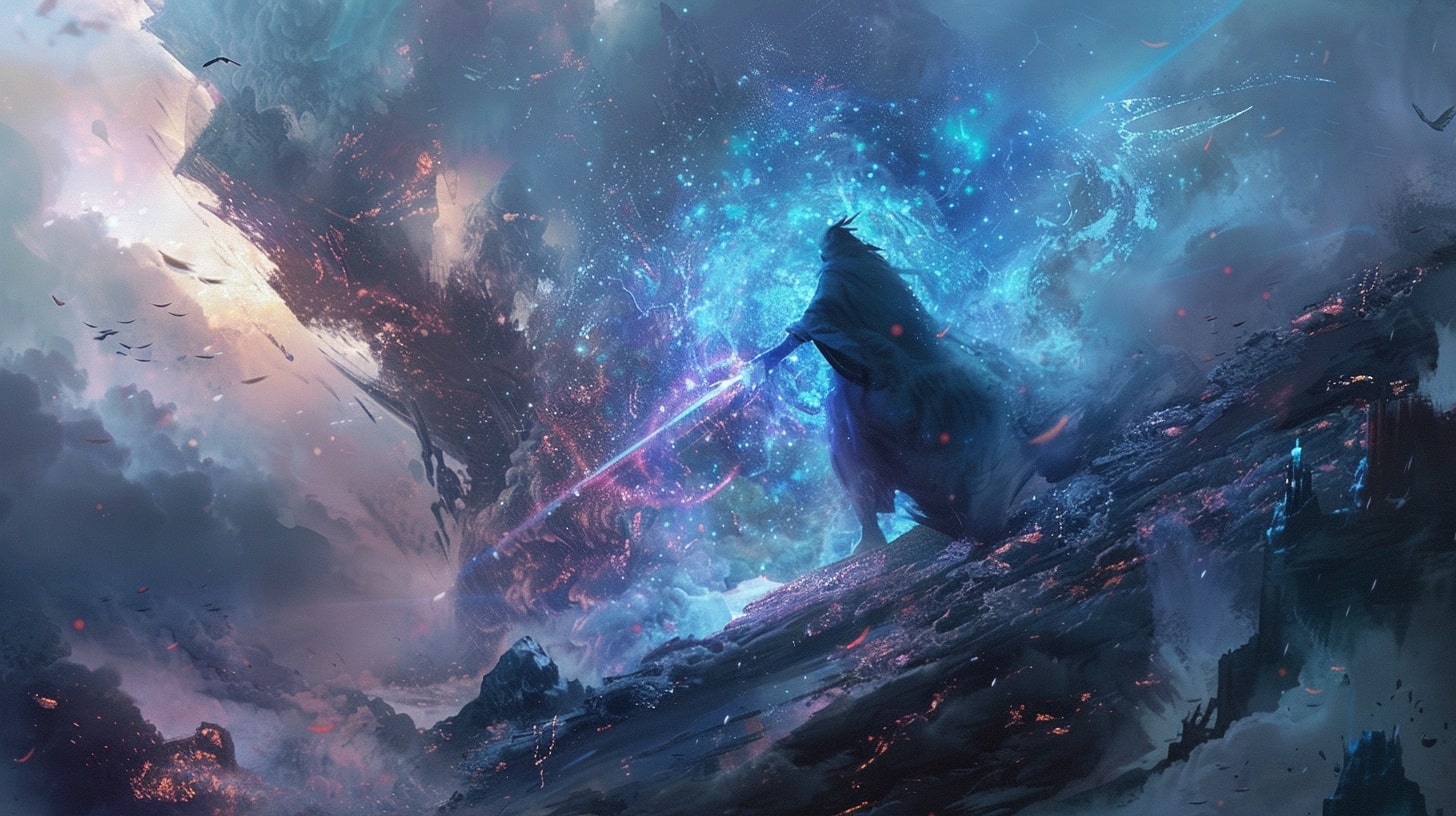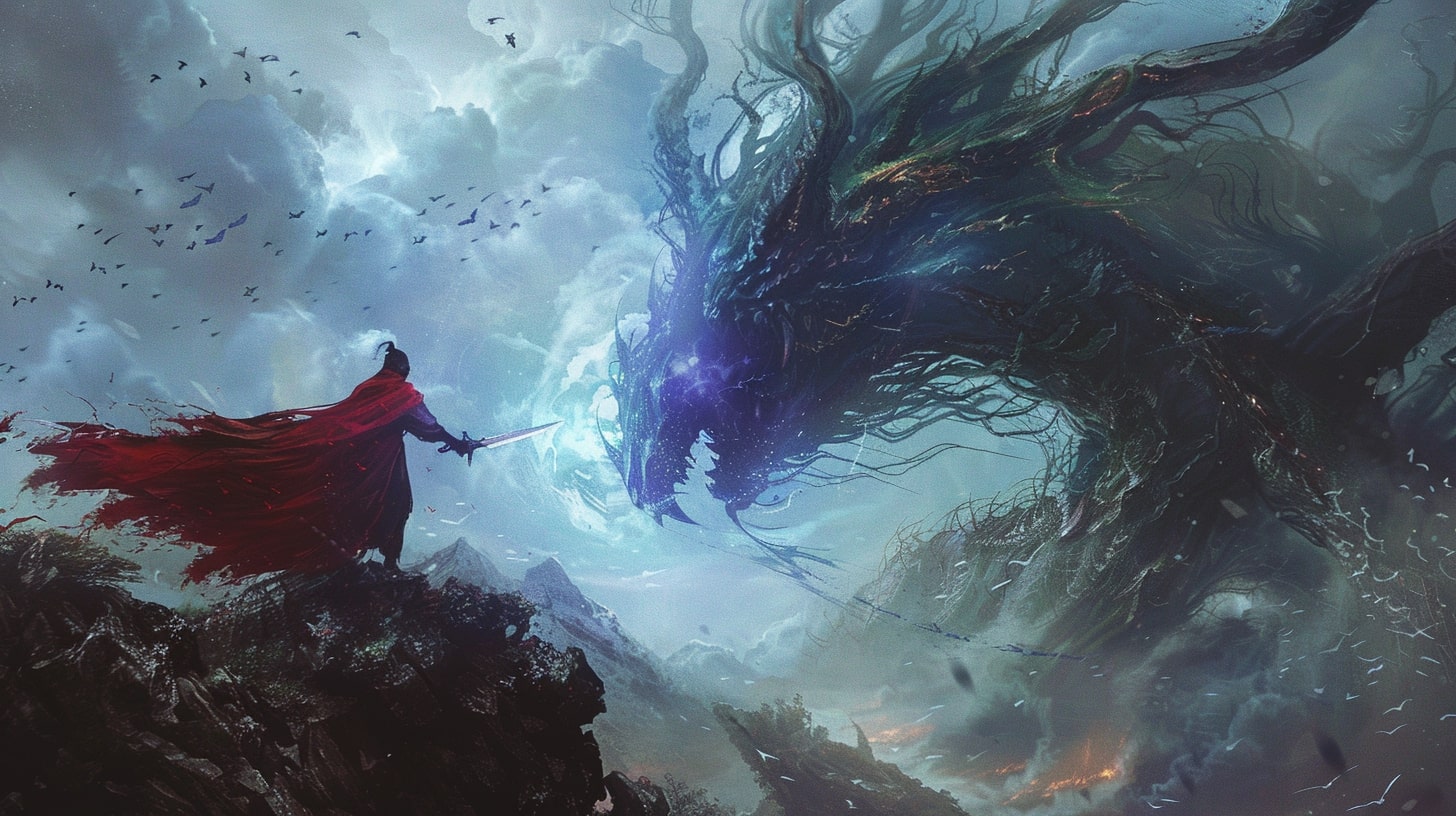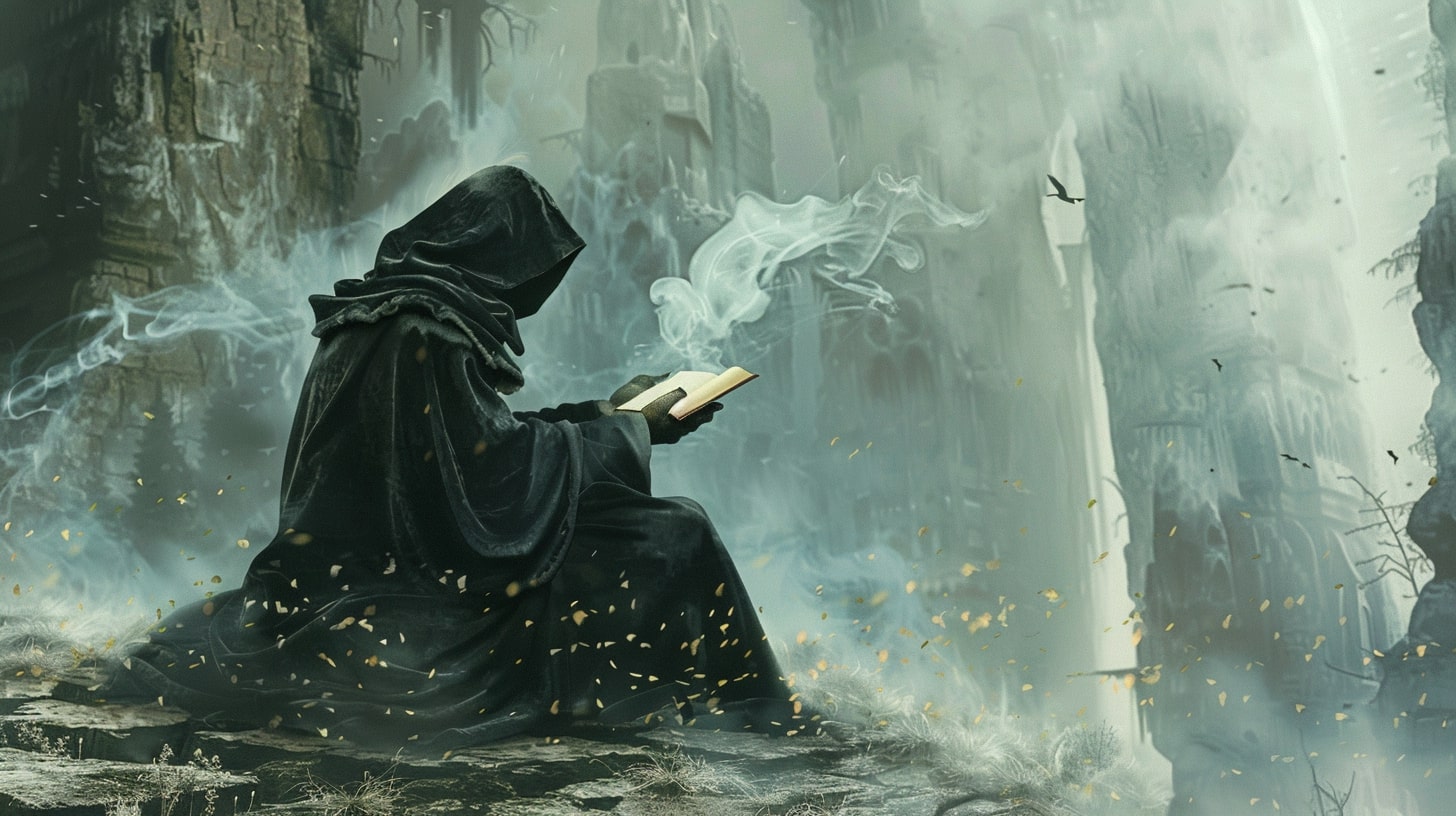Introduction to Magic Systems
Welcome to the enchanting world of magic systems in fantasy writing! As a writer, developing a well-crafted magic system is an essential aspect of creating a captivating and immersive fantasy world. Whether you’re conjuring spells, manipulating elements, or delving into the depths of mystical arts, a magic system brings wonder, excitement, and complexity to your story.
At Obsidian Tavern, we love to talk about magic systems and there are a number of them at the top of our list. One of them is the light magic system which is one of the more unique magic systems that you can implement in your world.
How does it work? First, let’s look at magic systems overall before fully diving in.
Importance of Magic Systems in Fantasy Writing
Magic systems play a vital role in fantasy writing, shaping the very fabric of your story’s world and adding depth to the narrative. They provide a set of rules and limitations that govern how magic works within your fictional universe. A thoughtfully designed magic system helps maintain consistency, establish conflict, and create opportunities for character growth and plot development.
A well-defined magic system also allows readers to suspend their disbelief and fully immerse themselves in the fantastical realm you’ve created. It adds an element of wonder, excitement, and discovery, keeping readers engaged and eager to explore the possibilities of your magical world.
Overview of Light Magic Systems
Within the vast landscape of magic systems, light magic holds a special place. Light magic is often associated with positive and benevolent forces, harnessing the power of illumination, healing, and illusions. It is a magic system that embodies hope, purity, and enlightenment.
In light magic systems, practitioners draw upon various sources of light energy to perform their spells and abilities. These sources can include natural light, celestial bodies, or even inner light emanating from one’s spirit. Each source brings its unique properties and capabilities, shaping the nature of the magic wielded.
By exploring the intricacies of light magic, you can unlock a world of possibilities for your characters and story. From elemental light magic to healing and illusionary light magic, the types of light magic available to your characters are vast and diverse. Understanding the different types of light magic and their applications will help you craft a magic system that is both engaging and believable.
Now that we have laid the foundation, let’s delve deeper into the elements, types, rules, and worldbuilding aspects of light magic systems. Through careful consideration and creative exploration, you can weave a magical tapestry that enchants your readers and brings your fantasy world to life.
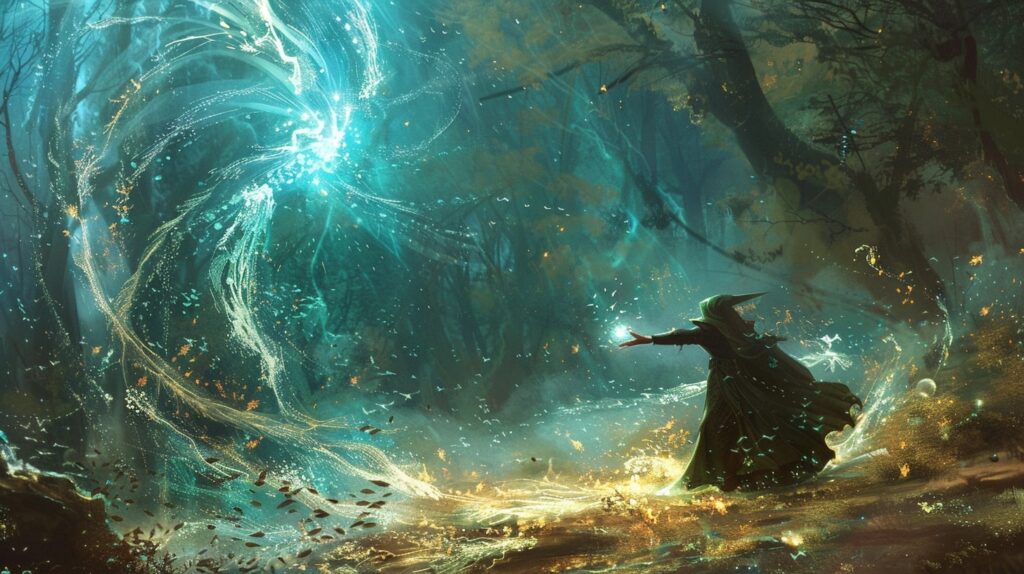
Elements of a Light Magic System
To craft a compelling light magic system, it’s important to understand the core concepts and principles that govern its use, as well as the sources from which light magic derives its power.
Core Concepts and Principles
At the heart of a light magic system are the core concepts and principles that shape its nature and abilities. Light magic is often associated with purity, healing, and illumination. It embodies the positive aspects of magic, providing a source of hope, protection, and enlightenment.
The principles of light magic revolve around balance, harmony, and the preservation of life. Light magic users typically draw their power from benevolent forces and use it to bring about positive change. They may focus on healing, protection, or the manipulation of light itself for various purposes.
In a light magic system, practitioners often adhere to a code of ethics and moral responsibility. They strive to use their powers for the greater good, promoting peace, healing, and dispelling darkness. However, this does not mean that light magic is without limitations or consequences. It is important to establish the boundaries and restrictions of light magic to maintain a sense of realism and tension within your world.
Sources of Light Magic
Light magic can be derived from various sources, each with its own unique qualities and characteristics. These sources can influence the nature and abilities of light magic users.
Divine Sources: Light magic can originate from divine entities or higher beings associated with light, purity, and enlightenment. These sources often imbue their followers or chosen individuals with the ability to wield light magic for the betterment of the world. The power granted by divine sources may come with certain obligations or responsibilities.
Natural Sources: Light magic can also be connected to the natural world, drawing energy from celestial bodies such as the sun, moon, or stars. The cycles and energies of nature resonate with light magic users, providing them with the ability to harness and manipulate light. This connection to nature may also align light magic with the protection of the environment and the balance of ecosystems.
Inherent Sources: Some individuals may possess an inherent affinity for light magic, with their abilities passed down through bloodlines or inherited through unique circumstances. These individuals are born with the natural ability to manipulate light and may undergo training or guidance to enhance their skills. Inherent sources of light magic can add depth to character development and create interesting narratives within your world.
By considering these core concepts and exploring the different sources of light magic, you can lay a solid foundation for your magic system. Remember to maintain consistency and coherence throughout your worldbuilding process. For inspiration and further exploration of magic system concepts, check out our article on magic system inspiration.

Types of Light Magic
When crafting a light magic system, it’s important to consider the different types of light magic that exist within your world. Each type has its own unique characteristics and applications. In this section, we will explore three common types of light magic: elemental light magic, healing light magic, and illusionary light magic.
Elemental Light Magic
Elemental light magic involves harnessing the power of light in its purest form and manipulating it to control the elements. Practitioners of elemental light magic can summon and manipulate light in various ways to create and control fire, water, air, and earth. By infusing light with elemental energies, they can create blinding light projectiles, conjure protective shields, or even manipulate the weather.
The versatility of elemental light magic makes it a formidable force in battles and a useful tool for various tasks. However, it is important to establish clear rules and limitations within your magic system to maintain balance and prevent overpowered characters. For more inspiration on developing unique magic systems, check out our article on magic system ideas.
Healing Light Magic
Healing light magic focuses on using light energy to restore and rejuvenate living beings. Practitioners of healing light magic possess the ability to channel light energy into wounds or ailments, accelerating the healing process. They can mend broken bones, close wounds, and even cure diseases and illnesses.
Healing light magic can be a vital aspect of your world’s healthcare system and play a significant role in the well-being of characters. Remember to establish the limitations of healing light magic, such as the extent of injuries it can heal or the energy required for different healing levels. For more ideas on developing a well-balanced magic system, visit our article on magic system balance.
Illusionary Light Magic
Illusionary light magic allows practitioners to manipulate light to create realistic illusions that deceive the senses. With this type of magic, users can bend and shape light to create illusions of objects, people, or entire environments. Illusionary light magic can be used for various purposes, including espionage, misdirection, or entertainment.
The complexity of illusionary light magic lies in the ability to create convincing illusions that can fool even the most discerning individuals. It’s important to establish the limitations of this type of magic, such as the duration of illusions or the energy required to sustain them. For more guidance on designing a magic system, explore our article on magic system design.
By incorporating these different types of light magic into your world, you can add depth and variety to your magic system. Remember to consider the rules, limitations, and interactions between different types of magic to create a cohesive and engaging magical experience for your readers.

Developing Light Magic Rules and Limitations
As you delve into creating a light magic system for your fantasy world, it’s important to establish rules and limitations that govern the use of this magical power. These rules and limitations help to maintain balance, create conflict, and ensure that your magic system remains believable and consistent. Let’s explore two key aspects to consider when developing the rules and limitations for your light magic system: balancing power and internal and external constraints.
Balancing Power and Limitations
To maintain a sense of realism and prevent magic from becoming all-powerful, it’s crucial to establish a balance between the capabilities of light magic and its limitations. Consider the following factors:
Energy Consumption: Determine how much energy is required to perform light magic. This can range from depleting the caster’s own physical or mental energy to drawing energy from external sources. By establishing a cost for using light magic, you create opportunities for tension and conflict in your story.
Skill and Training: Establish that mastery of light magic requires time, effort, and practice. Not everyone should be able to wield light magic with the same level of proficiency. This creates room for character development and growth as your protagonists strive to improve their magical abilities.
Specializations: Introduce the concept of specializations within light magic. Different individuals may have innate talents or affinities for specific aspects of light magic, such as healing or illusions. This adds depth and variety to your magic system while also emphasizing the importance of teamwork and collaboration.
Countermagic: Explore the existence of opposing or countermagic that can neutralize or weaken light magic. This introduces challenges and conflicts for your characters, forcing them to find creative solutions or rely on alternative skills and strategies.
By carefully balancing the power of light magic with its limitations, you can create a more engaging and dynamic magic system that enhances the overall storytelling experience.
Internal and External Constraints
In addition to balancing power and limitations, consider the internal and external constraints that shape the use of light magic.
Personal Morality: Explore how moral and ethical considerations influence the use of light magic. Characters may be bound by personal codes or cultural beliefs that restrict certain applications of magic, or they may face moral dilemmas when deciding how to wield their powers.
Societal Regulations: Develop rules and regulations within your fantasy world that govern the use of light magic. These can be enforced by a governing body or magical organization, ensuring that magic users are held accountable for their actions. Such regulations can create tension and conflict when characters must navigate the boundaries set by society.
Environmental Factors: Consider how the environment or specific locations can affect the use of light magic. For example, areas with a lack of light or strong sources of darkness may weaken or nullify light magic. This adds an extra layer of complexity and strategic thinking for your characters.
Consequences and Backlash: Establish that the use of light magic is not without consequences. Casting powerful spells could have physical, mental, or emotional repercussions on the user. Additionally, the excessive use of light magic may attract the attention of darker forces or disrupt the natural balance of the world.
By incorporating internal and external constraints, you add depth and realism to your light magic system, making it feel more grounded and integrated into your fantasy world.
As you develop your light magic system, keep in mind that consistency and internal logic are essential. Ensure that the rules and limitations you establish align with the broader aspects of your worldbuilding. By doing so, you can create a believable and captivating light magic system that enhances the overall storytelling experience for your readers.
Incorporating Light Magic in Worldbuilding
When incorporating a light magic system into your worldbuilding, it’s important to consider its cultural and historical significance as well as its interactions with other magic systems. These elements help to create a rich and immersive world where magic feels natural and integral to the story.
Cultural and Historical Significance
Incorporating light magic into the cultural and historical aspects of your world can add depth and authenticity to your storytelling. Consider how different cultures within your world perceive and interact with light magic. Is light magic revered and celebrated, or is it feared and misunderstood? How does light magic shape the traditions, rituals, and beliefs of different societies?
By exploring the cultural significance of light magic, you can create a sense of wonder and enchantment. Perhaps certain cultures have ancient rituals involving light magic, passed down through generations. Or maybe there are legends and myths surrounding powerful light magic practitioners who shaped the course of history. This cultural context can add layers of complexity to your world and provide opportunities for character development and conflict.
Interactions with Other Magic Systems
In a world where multiple magic systems coexist, it’s crucial to consider how light magic interacts with other forms of magic. Do different magic systems complement or clash with one another? Are there limitations or restrictions when combining light magic with other magical abilities? Exploring these interactions can lead to interesting plot developments and conflicts within your story.
For example, light magic may have a harmonious relationship with nature-based magic, with practitioners using light magic to enhance the growth and vitality of plants. On the other hand, light magic might be incompatible with dark magic, creating a constant struggle between forces of light and darkness. These interactions can create tension, alliances, and power dynamics within your world.
When incorporating light magic into your worldbuilding, it’s important to maintain consistency and internal logic. Consider the origins and mechanics of light magic, as well as its strengths and limitations. This ensures that your magic system remains believable and coherent throughout your narrative. For more inspiration and guidance on magic system development, check out our article on magic system creation.
By considering the cultural and historical significance of light magic and its interactions with other magic systems, you can create a vibrant and immersive world that captivates readers and brings your story to life. Let your creativity soar as you weave together the intricate tapestry of your magical realm.
Tips for Crafting a Believable Light Magic System
As you embark on crafting your light magic system, there are several key considerations that will help you create a system that feels believable and engaging. By focusing on consistency and internal logic, unique and engaging applications of light magic, and character development and conflict, you can bring your light magic system to life in your fantasy world.
Consistency and Internal Logic
To create a believable light magic system, it is important to establish consistent rules and principles that govern its use. By defining the core concepts and principles of your light magic system, you can ensure that its application remains coherent throughout your story. Consider factors such as the source of light magic, its limitations, and how it interacts with other magic systems in your world.
Maintain internal logic within your magic system to ensure that it aligns with the overall worldbuilding and story. Consistency in the rules and mechanics of light magic will help your readers understand and engage with the system. Avoid introducing arbitrary changes or exceptions without proper explanation, as this can undermine the credibility of your magic system.
Unique and Engaging Applications of Light Magic
To make your light magic system stand out, explore unique and creative applications within the bounds of your established rules. Think beyond traditional uses and consider how light magic can be utilized in unexpected ways. Perhaps light magic can be harnessed for communication, creating illusions, or enhancing healing abilities. Experiment with the limits of your system to showcase its versatility.
By incorporating unique spells and abilities associated with light magic, you can add depth and intrigue to your story. These distinctive applications can also serve as plot devices, driving the narrative forward and creating memorable moments for your readers.
Character Development and Conflict
A well-crafted light magic system can greatly impact your characters and their development. Consider how different characters interact with light magic based on their backgrounds, experiences, and motivations. Some characters may have a natural affinity for light magic, while others may struggle to harness its power. Use these differences to explore their growth arcs and create compelling character dynamics.
Introduce conflict and challenges related to light magic to add tension and depth to your story. This can come in the form of internal conflicts within characters, ethical dilemmas surrounding the use of light magic, or external conflicts between characters with opposing magical abilities. Conflict can drive the plot forward and create opportunities for character growth and exploration.
By focusing on these tips, you can craft a light magic system that feels authentic and enriches your fantasy world. Remember to maintain consistency, explore unique applications, and use light magic to drive character development and conflict. With a well-developed light magic system, your readers will be enchanted by the magic woven into your story.



